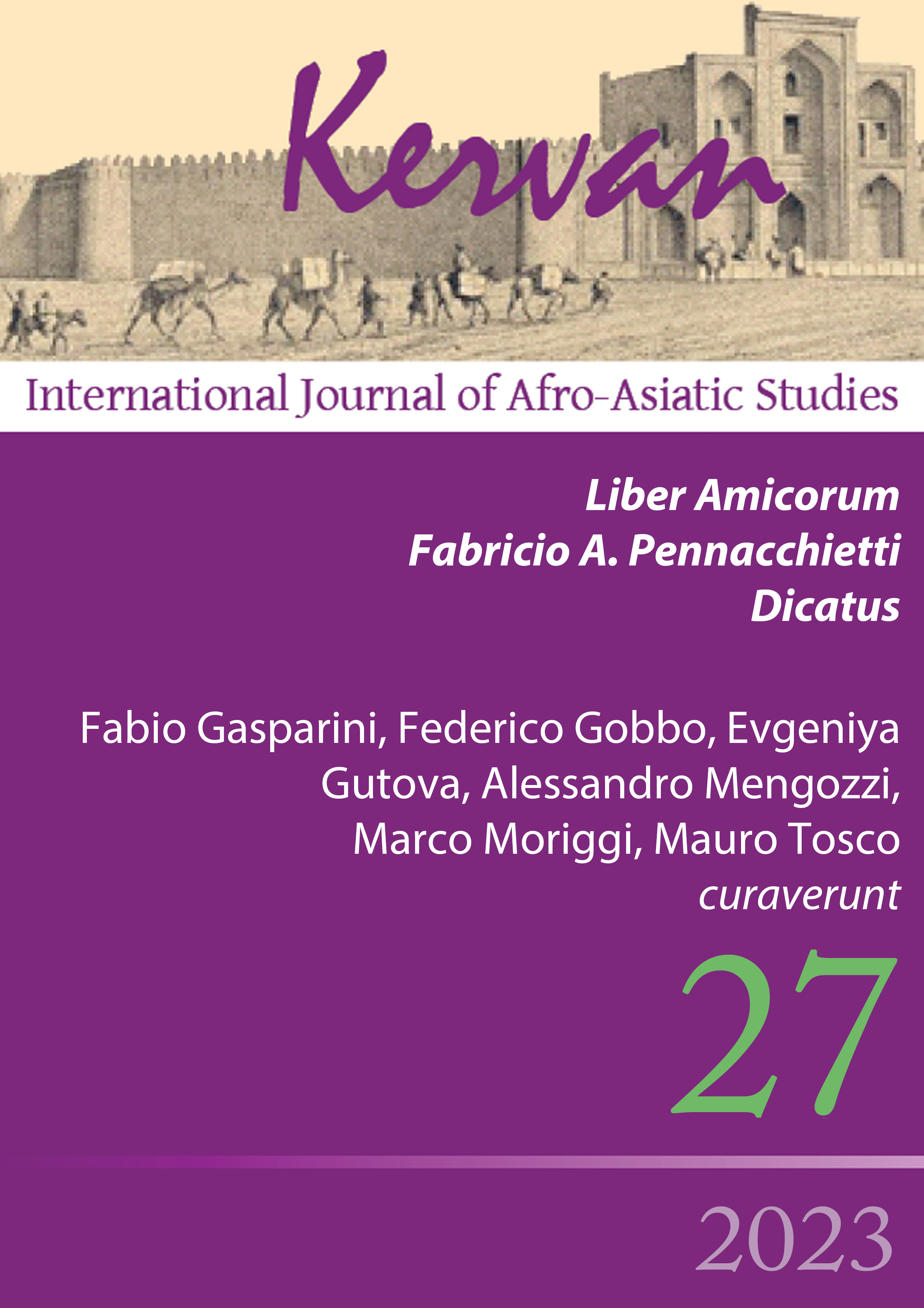Sulla soglia del visibile sentire: Appunti di ermetismo arabo
DOI:
https://doi.org/10.13135/1825-263X/8235Abstract
Ostanes is a legendary Persian sage of the Magi priestly circle, who figures frequently in a wide variety of texts on magical and alchemical subjects from Antiquity. The name Ostanes (Old Persian huštāna “of good standing”) is well attested in sources from the Achaemenid period. One person bearing this name, a Magus who accompanied the armies of Xerxes in the early fifth century BCE, was claimed by some Greek and Roman authors to be the ‘historical’ Ostanes, who would have produced these writings (Plin. Nat. hist. 30.8). His renown depended chiefly on the fact that he was believed to have been the teacher of Democritus of Abdera. Although these traditions about Ostanes mainly emerge around the beginning of the Common Era or even later, they seem to be presupposed already in the works of Bolos of Mendes, in the second century BCE. It is in fragments of Bolos’ writings that the connections between Democritus and Ostanes on the one hand, and between both authorities and the beginnings of Alchemy on the other, find their earliest expression and, probably, their origin. In the Book of Ostanes or “Book of the twelve chapters of Ostanes the Wise on the science of the renowned Stone,” the Persian Magus is the protagonist of a visionary experience in which he will obtain the secrets of the alchemical practice. This would explain the relative paucity of texts actually ascribed to Ostanes—as opposed to passages in which he is invoked as authority, chiefly spells and recipes—as well as the fact that fragments invoking Ostanes as an authority show little to nothing that can be recognized as Iranian. On the contrary, they seem to be very much at home in Hellenistic Egypt.
Downloads
Downloads
Published
Issue
Section
License
Gli autori che pubblicano su Kervan accettano le seguenti condizioni:
- Gli autori mantengono i diritti sulla loro opera e cedono alla rivista il diritto di prima pubblicazione dell'opera, contemporaneamente licenziata sotto una Licenza Creative Commons - Attribuzione che permette ad altri di condividere l'opera indicando la paternità intellettuale e la prima pubblicazione su questa rivista.
- Gli autori possono aderire ad altri accordi di licenza non esclusiva per la distribuzione della versione dell'opera pubblicata (es. depositarla in un archivio istituzionale o pubblicarla in una monografia), a patto di indicare che la prima pubblicazione è avvenuta su questa rivista.


 The articles that have appeared on Kervan since 2016 are rated as Class A in the system of National Scientific Qualification (ASN, disciplines 10/N1 and 10/N3).
The articles that have appeared on Kervan since 2016 are rated as Class A in the system of National Scientific Qualification (ASN, disciplines 10/N1 and 10/N3). The journal has been approved for inclusion in DOAJ. The DOAJ listing of the journal is available at
The journal has been approved for inclusion in DOAJ. The DOAJ listing of the journal is available at  The journal has been approved for inclusion in ERIH PLUS. The ERIH PLUS listing of the journal is available at
The journal has been approved for inclusion in ERIH PLUS. The ERIH PLUS listing of the journal is available at  Kervan was just accepted for indexing in SCOPUS. This important milestone ensures that articles published in Kervan are easily found when searching for library, archives and Information science and it enables Kervan authors to keep track of how often their article has been cited by others.
Kervan was just accepted for indexing in SCOPUS. This important milestone ensures that articles published in Kervan are easily found when searching for library, archives and Information science and it enables Kervan authors to keep track of how often their article has been cited by others.

